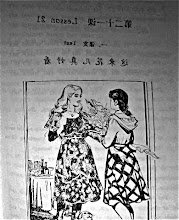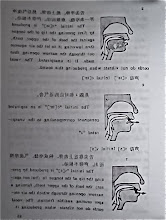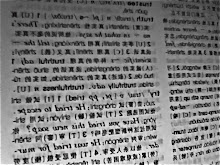I have a number of pots on the stovetop. "Bed: The Essay, Part II" and "On Direct & Indirect Experience: The Work of Art in The Age of Digital Reproduction" I have placed on the back burner. These are still climbing to their boiling points. I have started "Meta-Crisis: Some Thoughts & Concerns about Art," but must let it simmer for now, as to synthesize better the ingredients. Then there is Bed: The Sequence, poems about the bed. This sequence, I am thinking, may organize itself around the 7 Valences I discussed in "Bed: The Essay, Part I." The number 7 is irresistible, but I don't want to script a recipe for it. And we also have my ongoing Eclogues and Elegies, which have no recipe, as I am striving to embody the precepts and principles of seriality. Plus, I feel a new poem emerging out of a conversation I had with a friend this weekend. I am not sure whether it will become an "Eclogue" or an "Elegy" or neither. But I'd hate for it to be a Spicerean "one-night stand" poem.
In the meantime, let's get back to the basics with a couple of etymologies. In this edition, I want to look at two cornerstone words in our creative lexicon: poetry and art.
Poetry
Poetry (along with its archaic cousin poesy and the suffix -poiesis, among other incarnations) first derive from, you guessed it, Latin, by way of French forms that are nearly identical to their English cognates. The Latin roots have three permutations. Poēsis is the "art of poetry"; poēma is a "poem" or "poetry" in the collective; poēta is a "poet," "playwright," a "person of great skill," or an "artist." Each has a Greek ancestral equivalent that ultimately originate from the Greek verb, poieo (ποιέω). The verb is flexible and polysemous, meaning "make," "do," "produce," "be the author or cause of," "prepare," "acquire," along with a slew of other variations. This word, in turn, comes from the Proto-Indo-European *ku̯ei-, which means to "stow," "gather," or "pile up." The root is embodied in a handful of Indic languages, and means the same as the root, with a few delightfully rich variations: the Sanskrit, kāya, "body," and citrakāya, "tiger" (literally, "speckled-body," giving us the word cheetah.)
The etymology of poetry is wonderfully tangible and apropos to what I think poetry, in fact, is. Poetry is very much a made thing, a pile of sounds and images gathered and arranged, a heap of stowed meaning. The etymology reminds me of Frost's "The Wood-Pile," of Stevens' "Man on the Dump," of Lorine Niedecker's "condensery" in her "Poet's Work," of Duncan's "Often I am Permitted to Return to a Meadow." The etymology of poetry, I am sure, was not lost on Duncan.
Art
Art (with its kin artifice, article, and co.) derives from the Latin ars, artis—a feminine noun primarily meaning "skill," "craft," and "trade" used frequently to refer to the work of craftsmen, tradesmen, and, well, artisans. While the word does secondarily mean "a work of art," it also signifies such things as "invention," "trick," and "stratagem." But the meanings don't stop there, as ars diversely denotes "military tactic," "manner," "method," "means," "science," "theory," "profession," "occupation," and so on.
Artifice is a combination of ars and facere, "do" or "make," thus forming the sense of "a making by skill."
The Proto-Indo-European source is the simple *ar-, meaning to "fit," "suit," and to "join." The cognates in Indo-European are far too abundant to list, but here are few of the very many English ones:
adorn
arm (body part; weapons)
army
alarm
arithmetic
order
ratio
read
rhyme
rite
Math, science, reading, religion, war—all arts, all telling the story of man.
The etymology of art reminds us of art's physicality: of colors, sounds, shapes, rhythms, notes, motions, lines orderly ordered, suitably suited, fittingly fitted. But, more importantly, of colors, sounds, motions, etc. joined in novel, challenging, and unexpected ways. Art is not first of the intellect, but of the hands, of the body, of things, of the world.
Details are thanks to my Amsco Latin Dictionary (2nd ed.), www.etymonline.com, The University of Texas at Austin's Indo-European Lexicon available at http://bit.ly/2HDcgC.



No comments:
Post a Comment